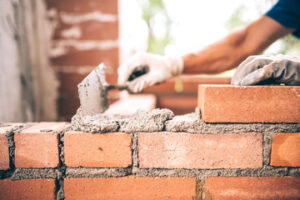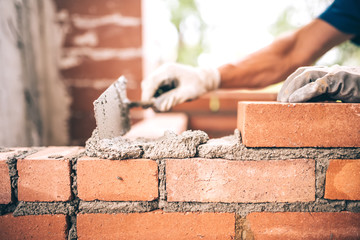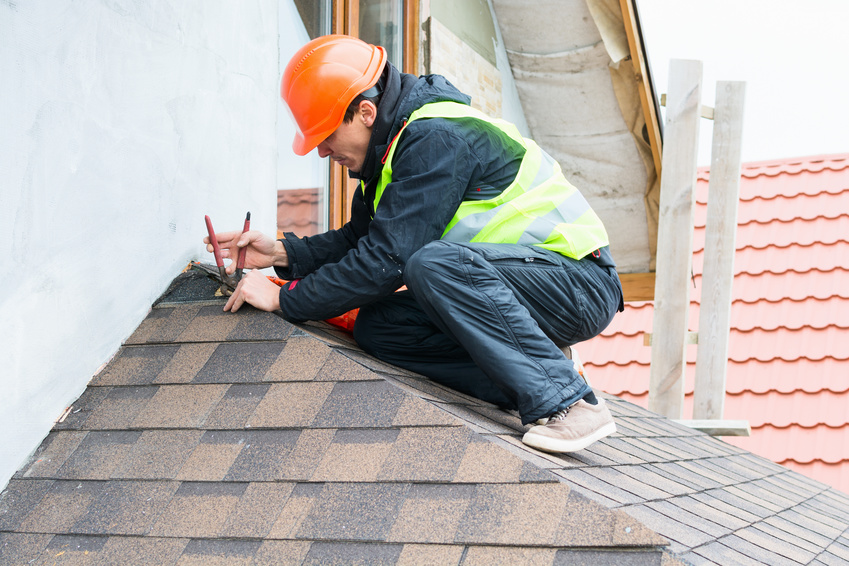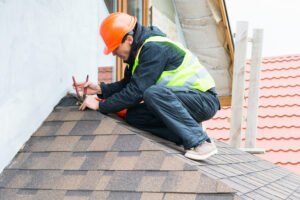Masonry consists of bricks, stone or concrete that are put together to form walls and buildings. Masonry Charleston SC is durable and can resist damage from earthquakes, hurricanes and other natural disasters. Masonry quietly promotes the principles of morality and encourages good work within the community. Its members oppose oppression, tyranny, fanaticism, and usurpation of power.
 Brick is a popular construction material and has been since ancient times. It is inexpensive to produce and easy to shape with a variety of tools, making it a versatile building material. It is also easily worked by hand or by machine, making it ideal for jobs where skilled tradespeople are scarce.
Brick is a popular construction material and has been since ancient times. It is inexpensive to produce and easy to shape with a variety of tools, making it a versatile building material. It is also easily worked by hand or by machine, making it ideal for jobs where skilled tradespeople are scarce.
Different types of brick are used in masonry construction and have various characteristics, such as color, surface texture, density, weight, water absorption, pore structure, thermal behavior, fire resistance and more. These factors are important to determine the correct type of brick for a specific job.
Most brick is rectangular in shape and made of clay. However, there are a number of variations in the type of clay used and the method of manufacture, which can change how well a brick performs.
Sand lime bricks, which are commonly used in Masonry, consist of sand, lime and fly ash that are bonded through a detailed chemical process. This creates a brick that is extremely durable and can effectively resist frost, acid and water. Engineering bricks are also made of clay but are fired at very high temperatures, allowing them to withstand extreme pressure and limit water absorption.
There are other varieties of bricks that can be used in masonry, including pressed, dry-pressed and extruded. Each has its own advantages and uses, depending on the particular application.
The main reason brick remains a popular choice is its durability and versatility. It is also relatively easy to cut and can be shaped into a variety of forms to meet various needs, such as window sills or archways.
The earliest brick structures were made of primitive materials such as mud and sand, but with time and advances in technology, the brick industry has developed. It has become a highly refined art form, with masons often taking pride in the finished product. Bricks are typically adorned with inscriptions, symbols and designs. They are also often used for decoration and can be carved, colored and painted in a variety of ways. Masonic symbols are usually drawn from the tools of a mason, such as the square and compasses, trowel, level and plumb rule.
Stone
Stonemasons use a variety of materials to build walls and structures. These materials can include stones, bricks, concrete blocks and other prefabricated units. They also may incorporate wood framing, metal reinforcement and other components. Masonry is a skilled trade, and good workmanship is important for its durability and aesthetics.
Stones used in masonry include granite (igneous), limestone and sandstone. These rocks are obtained from the earth in quarries or mines, where they are carved and cut into slabs for further work by masons. Limestone is a sedimentary rock made up of the minerals calcite and aragonite. It is primarily used as a building material and may also be used as aggregate for road construction or as a source of white pigment.
A popular trend in recent times is to use sandstone, limestone and slate to design the exterior of a home or commercial building. These natural materials offer a warm, rugged appeal and add beauty to the structure. They also enhance thermal performance and help protect the property from damage by weather, insects and other elements.
There are several styles of stone masonry, including rubble and squared rubble. Rubble masonry uses stones that have been dressed, or shaped, with hammers and chisels to create uniform joints between the pieces. This style can be coursed or uncoursed, with a coursed variation using larger stones and defined horizontal joints and an uncoursed variation using smaller stones and no defined vertical or horizontal joints. A further subcategory of rubble masonry is polygonal rubble, where the stones are dressed into irregular shapes that give the structure an appearance of great strength and complexity.
For stonework in which the beds and sides of the stones are finely chiseled but the exposed faces are rough, there is a technique known as ashlar rough masonry. This is a compromise between the two styles, as it provides the benefits of a fine-faced finish and a more durable surface. This type of masonry is typically used for quoins, voussoirs and other architectural details. It is also used for steps, parapets and copings on buildings.
Concrete
Concrete is an integral part of masonry and contributes to the strength, durability, fire resistance, energy efficiency and sound attenuation of a wall system. Concrete masonry units are manufactured in a wide variety of shapes, sizes, colors and architectural finishes to achieve any number of appearances and functions. A broad sampling of available unit types and construction methods is shown in TEK 14-6, Concrete Masonry Bond Patterns.
The construction of a property using masonry materials can take longer than properties constructed with other components. This is due to the fact that mortar must be prepared on-site. Additionally, weather conditions can impact masonry construction, as teams may not be able to work during rain and other cold or damp conditions.
Stone, brick and concrete are strong and durable building materials that can withstand heavy loads without damage. Masonry also offers resistance to the growth of insects and mold, as well as to noise pollution caused by traffic and railroad tracks.
While masonry construction can be time-consuming, there are some processes that help speed up the process. For instance, some manufacturers produce precast concrete products that can be delivered to the construction site ready for installation. This eliminates the need to transport raw materials, which saves time and money.
Other innovations in masonry construction include the use of post-tensioning in concrete structures. This technology adds an additional axial load to the structure, and thus increases the resistance of the wall to lateral force. This technique is becoming increasingly popular in commercial, industrial and residential construction, as it allows architects greater freedom with design features.
In addition to these technologies, masonry can be made more sustainable by using recycled or reclaimed materials. It is also often made locally or within a short distance of the construction site, which reduces transportation impacts and emissions. This helps contribute to green rating systems for buildings. In addition, masonry is durable and can last for a long time, which can decrease the cost of maintenance over the life of the building. This can be a major advantage for commercial and industrial properties, which tend to have more frequent tenant turnover.
Other Materials
Masonry is a popular choice of construction material because it offers versatility, architectural freedom and aesthetic beauty while providing durability, safety, minimum maintenance, and fire resistance. It also prevents moisture from damaging a structure and is an effective barrier to sound. Its thermal mass helps to reduce internal temperature fluctuations and peak loads on heating and cooling systems.
Modern masonry is typically constructed with bricks, concrete blocks, or structural clay tile and held together by mortar. Mortar for masonry is not the same as cement mix used in sidewalks or patios and contains lime, sand, and aggregate in the correct proportions.
Stone and clay continued to be the primary masonry materials through the Middle Ages and into early modern times. By the time of the Romans, a significant development was concrete, made from pozzolanic tuff mixed with water and aggregate to form a dense, lightweight material that could be cast into forms for walls and other structures. Concrete was a more cost-effective, quicker, and easier material to erect than stone masonry.
Concrete blocks are typically hollow and have a high compressive strength. They can be reinforced with steel to increase their tensile and lateral strength. They are ideal for load-bearing walls or for cladding that is not required to be structural. They are generally much cheaper than a comparable wall of stone or brick and are easy to cut into to create openings for doors and windows.
Blocks of cinder or ordinary concrete are often used to provide the structural core of veneered brick masonry and can be used alone as walls for factories, garages, or sheds. These blocks are fabricated from cement, sand, and aggregate and are available in a wide range of sizes. They are a faster and more economical option than brick because they do not require as much mortar for each course.
For cladding and other non-load bearing uses, concrete is usually mixed with aggregates and colorfast pigments to make it look like natural stone. It can be molded into different textures and finishes to mimic the appearance of stone, brick, or other materials. It is also used in concrete precast or tilt wall panel systems that can be produced to a precise architectural finish with a variety of colors and textures.



